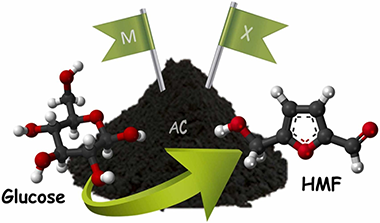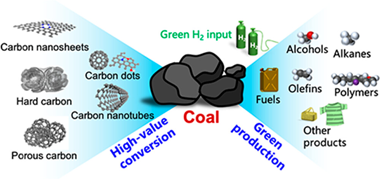Scientific Papers in SCI
2023
2023
Reactividad de Sólidos
Integration of calcium looping and calcium hydroxide thermochemical systems for energy storage and power production in concentrating solar power plants
Carro, A; Chacartegui, R; Ortiz, C; Arcenegui-Troya, J; Perez-Maqueda, LA; Becerra, JAEnergy, 283 (2023) 128388
Show abstract ▽
Energy storage is a key factor in the development of renewables-based electrical power systems. In recent years, the thermochemical energy storage system based on calcium-looping has emerged as an alternative to molten salts for energy storage in high-temperature concentrated solar power plants. This technology still presents some challenges that could be solved by integrating the thermochemical energy storage system based on calcium hydroxide. This work studies a novel concentrated solar power system integrating calcium-looping and calcium hydroxide thermochemical energy storage systems. The results show that the combined use of hydration -dehydration cycles in the calcination-carbonation processes of the calcium looping for energy storage could partially solve the issue related to the multicyclic deactivation of calcium oxide. The improvement in the con-version of calcium oxide during carbonation is demonstrated experimentally when hydration-dehydration cycles are combined. Numerical simulations demonstrate the technical feasibility of the integrated process, with effi-ciencies ranging between 38-46%, improved with the increase in calcium oxide conversion in the carbonator, showing the potential of the proposed integration.
November, 2023 | DOI: 10.1016/j.energy.2023.128388
Reactividad de Sólidos
Efficient SrO-based thermochemical energy storage using a closed-loop pressure swing
Amghar, N; Sánchez-Jiménez, PE; Ortiz, C; Pérez-Maqueda, LA; Perejón, AApplied Thermal Engineering,
Show abstract ▽
The SrCO3/SrO system has recently attracted interest for thermochemical energy storage due to the high energy densities potentially attainable. However, the high temperatures needed to promote calcination involve a sintering-induced deactivation of SrO to carbonation. In this work, SrO-based samples have been tested using a closed-loop pressure swing approach involving calcinations and carbonations at absolute pressures of 0.01 bar and 1 bar CO2, respectively. Using low CO2 absolute pressure for calcination decreases the reaction temperature to 900 degrees C, thus reducing the deactivation of SrO. Moreover, the use of additives further improves the reactivity of the samples. The addition of ZrO2 and MgO by mechanical mixing and acetic acid treatment, respectively, results in samples with very high multicycle performance, yielding material energy storage densities after twenty cycles above 5.0 GJ/m3. These results significantly improve those obtained for similar samples in which calcinations and carbonations were carried out at an absolute pressure of 1 bar CO2. Regarding the integration of the thermochemical energy storage into concentrating solar power plants, calcining SrO-based materials at low pressure increases the net thermal-to-electric efficiencies by up to 6 % points compared to CaO-based materials calcined at the same conditions. The importance of experimental conditions and precursors in the multicycle behaviour of SrO-based materials for thermochemical energy storage is emphasized.
November, 2023 | DOI: 10.1016/j.applthermaleng.2023.121411
Materiales Coloidales
Mn2+-doped MgGeO3 nanophosphors with controlled shape and optimized persistent luminescence
González-Mancebo, D; Arroyo, E; Becerro, AI; Ocaña, MCeramics International, 49 (2023) 36791-36799
Show abstract ▽
Mn2+-doped MgGeO3 (MgGeO3:Mn2+) is an efficient persistent phosphor that emits red luminescence for long time after stopping excitation with UV light. For optical and biotechnological uses a precise control of particle size and shape is highly desired since these parameters may have a strong influence on the properties and suitability of phosphor materials for the intended applications. To the best of our knowledge, MgGeO3:Mn2+ has been synthesized by conventional solid-state-reaction, which yields particles of heterogeneous size and shape. Here, we report for the first time in the literature a salt-assisted method for the synthesis of MgGeO3:Mn2+ nanoparticles with uniform shape (nanorods) and a mean size of 350 nm x 99 nm. The rigorous study of the luminescence properties of the MgGeO3:Mn2+ nanorods revealed that whereas the optimum doping level for photoluminescence was 2.0 mol% Mn2+, the best persistent luminescence was attained with just 0.5 mol% Mn2+, which is ascribed to the different mechanisms of both luminescence processes. The optimum persistent nano-phosphor showed an intense red emission, which persisted at least 17 h after stopping the excitation. Such excellent properties make the developed nanophosphor an attractive candidate for use in optical and biotech-nological applications.
November, 2023 | DOI: 10.1016/j.ceramint.2023.09.008
Química de Superficies y Catálisis
Glucose dehydration reaction over metal halides supported on activated charcoal catalysts
Martin, Gabriel Delgado; Lara, Beatriz; Bounoukta, Charf Eddine; Domínguez, María Isabel; Ammari, Fatima; Ivanova, Svetlana; Centeno, Miguel ÁngelCatalysis Today, 423 (2023) 114012
Show abstract ▽

Different metal halide catalysts supported on a commercial active charcoal have been synthesized, activated, characterized and tested in glucose dehydration to 5-hydroxymethylfurfural using a biphasic water/methyl isobutyl ketone media. The influence of the cation nature (K+, Ca2+, Sr2+, Mg2+) and anion nature (F-, Cl-, Br-) on the catalytic performance of the solid is discussed in terms of glucose conversion, HMF yield and products selectivity. The activation of the impregnated catalysts results in a great diversity of active sites, such as Bronsted sites (carboxylic groups), basic sites (metal oxide), and Lewis acid site (Mn+). Their distribution within the samples determinates the resulting products and the final HMF yield.
November, 2023 | DOI: 10.1016/j.cattod.2023.01.019
Química de Superficies y Catálisis
Coal Chemistry Industry: From Production of Liquid Fuels to Fine Chemicals to Carbon Materials
Zhang, YY; Li, HT; Reina, TR; Liu, JEnergy & Fuels, (2023)
Show abstract ▽

Coal resources are one of the key energy sources and essential for modern economic development. Despite the traditional coal industries having made considerable contributions to chemical production and energy storage, the accompanying environmental pollution and high energy consumption have also arisen that cause significant influence of the ecological balance. Hence, there is an urgent need to exploit feasible approaches to the sustainable utilization of coal resources. This review begins with a comprehensive summary of the representative coal chemistry technologies with critical discussions. Subsequently, a novel strategy coupled with green hydrogen is discussed for sustainable conversion of coal and highly efficient manufacture of downstream products. Moreover, the unique role of coal in terms of high-value-added carbon material production is highlighted as a low-cost resource for distinct applications. Finally, we propose several future directions for advanced coal chemistry development.
November, 2023 | DOI: 10.1021/acs.energyfuels.3c02661
- ‹ previous
- 8 of 410
- next ›














